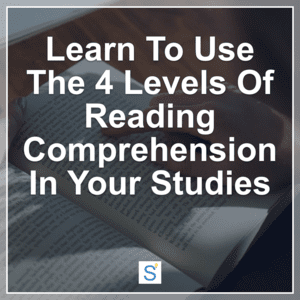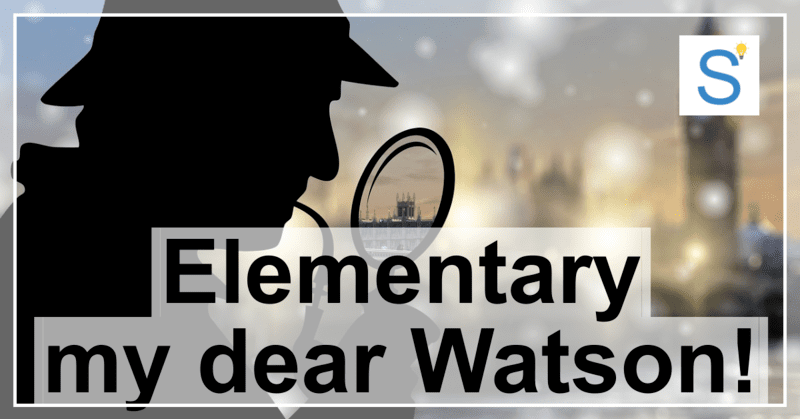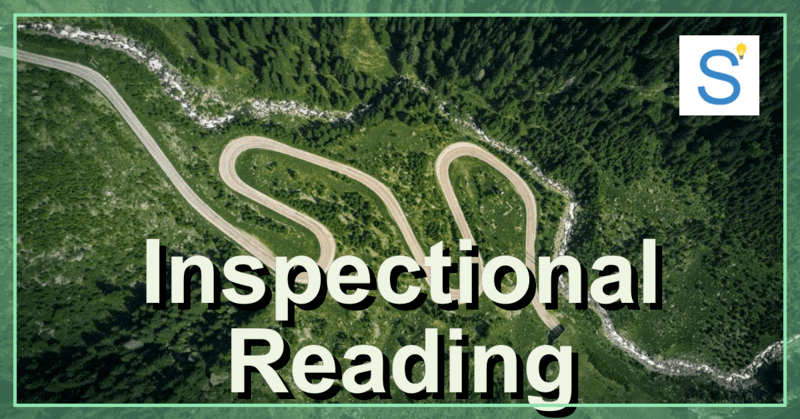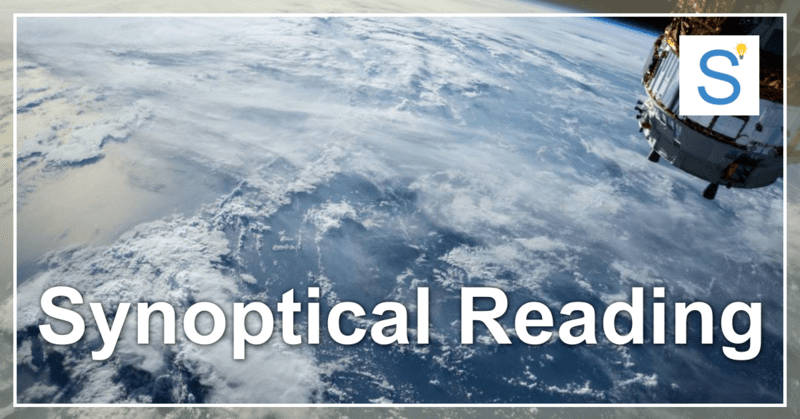Reading isn’t the same every time. When you are scrolling through your messages, your reading is probably highly superficial. You will pay more attention to a message if you see something that really catches your eye or sounds interesting.
It was many years ago Mortimer Adler wrote in his book “How to Read a Book” about the 4 levels of reading comprehension.

As with many ideas, it isn’t that ground-breaking when you look at it with present-day knowledge. Yet seeing it described this way is very powerful for your current reading. Knowing that you can read differently through documents helps you to read more purposely.
Mr. Adler stated there are 4 levels of reading and how you are comprehending what you read. These are elementary, inspectional, analytical, and syntopical reading. Let’s have a closer look at all four, and how you can use them when studying.
Level 1: Elementary Reading

Elementary reading is the kind of reading you learn in school. It helps you to translate the text into words you can understand. You first learn to read characters, you form words from them, and you hear the sounds. You literally hear the words and then you understand them.
This is something you often see when people are reading. You can see their mouths form the words. This usually happens when a text is too difficult or has many new words. We go back to our elementary reading level.
Many people feel their reading speed isn’t fast enough. That is because they want to hear the words in their head. The speed at which you speak determines your reading speed. Fast-talking people are by nature also faster readers.
When to use this level? When you are casually reading. This could be for fictional works like stories or a news article online. You read it, but you don’t really need speed.
Also use this when you find difficult words in a text and you don’t really know how to form them.
Let’s move on to level 2, inspectional reading…
Level 2: Inspectional Reading

Inspectional reading is used to get a basic idea of a text. You use this way of reading to see what a document is about. There is no need to actually understand the finer details. Simply read and move on.
Inspectional reading is a great way to identify what you should do with a text. A strategy for using this is when you receive a new study book (or any other type of document that is…).
You start reading the cover, look over the table of contents, and browse through the chapters. You don’t try to understand what you read. You are only looking at headlines, highlighted words, and other information that catches your attention.
After doing this for a chapter (for example), you stop and determine if this is something you should be reading. When you are studying, and you are supposed to read that chapter, you can identify important parts in this process.
The result of this is that you have a good overview of the roadmap of the chapter. This is very important. It helps you to stay on track when reading. You will not be distracted by small sidesteps the author makes to related topics. You know where you are going!
Another way you can use this type of reading is by reading superficially. This means that you simply read (I like to call this light reading). You don’t try to understand everything. There is no need for weighing arguments, pros and cons, background reasoning. None of that is important. You simply read and let yourself be exposed to the information.
You might say skim-reading or superficial reading is not really helpful. I would say it is very important. It will save you time when you do the actual deep reading.
You give your brain time to get used to the new information. Not by immersing yourself, but by gradually learning more.
How to use this: Next time you have to read a chapter, do some skim reading or superficial reading first. I suggest you do this just before you go to sleep. You give yourself permission to simply read it, without trying to understand everything.
The next morning when you will study, you start with analytical reading (level 3). Since you already have a good understanding of the general direction, you can make good progress.
Level 3: Analytical Reading

Now we are reaching the level you should be reading when you are studying. Level 2 was great to get a general idea of what you are studying. Level 3, the analytical reading, is needed to go from a general idea to a good understanding.
Of course, this is what studying is all about. You really consume the content of the book. Speed isn’t important. Usually reading speed is rather slow. That is because you have a lot of thinking to do!
You could almost say that time isn’t important as well. All that matters is that you go through the book and understand what the author is discussing.
One important requirement for doing this is learning to create focus at will. When you are able to focus better, analytical reading is easier.
In the end, you not only understand what you studied. You also know how to form your own opinions about the topic.
It is at this stage where you can confidently go to the exam and pass it. You took the time, invested the energy, and assimilated the knowledge and wisdom from the book.
How to do this: Make sure you have the needed background information. With any book you study, you should have sufficient knowledge to at least understand the basics of the book.
Once you have that, you start your reading. You take notes. This could be in a mind map or perhaps even in de sideline or by highlighting. You identify the key concepts and read about how they are formed. Do you understand what is written? Can you explain them in children’s language? If so, you probably understand what you are studying.
Whatever you understand, you probably don’t have to memorize. Even if you need to memorize, it is easier (because you understand it). Memorize important other facts, figures, numbers, etc. After doing this, you are done with this book. You are ready for your exam, or for further studying.
Do you want to go even deeper when reading a book? Go to level 4…
Level 4: Syntopical Reading

When you really want to understand what you are reading you need level 4, syntopical reading.
This level goes beyond normal reading. Where you studied a book in level 3, you study a field of expertise in this level.
That means you start going through related books. You can read books on the same topic. You can also read related books or books derived from that topic. When you read a book on memory tactics, you can read books on creativity, notetaking, etc. These are related topics.
It can be very helpful to read books related to your topic. This way you expand your knowledge from a single stand-alone topic to become a truly holistic understanding.
You identify differences between books. You analyze texts to find overlap. You are putting yourself outside and above the information, knowledge, and wisdom.
Make sure you start by asking a question. This question is your starting point for going deeper into the books.
A lot of the actual reading may be going on inside your head. You analyze the different facts, ideas, theories, or opinions. You may even start to outline your own theory or ideas on paper. You create a mind map or outline and work towards something new.
How to do this: ALWAYS carefully examine what you are reading. This is the first step in becoming a complete reader. Think about how you can use the information to move forward. Don’t just regurgitate other people’s thoughts. Get control over the information and outline and describe your own ideas.
Find different sources and see if your ideas are valid. Find differences between ideas and figure out how this could happen. When you can do this, you really understand the material!
How to use this information when studying
It is important to know that you can’t become a syntopical reader without going through the other levels. In order to really think about a text, and to understand how this is important to you, you have to be able to analyze the text (level 3). And to do that, you need the other levels.
Fortunately, most adults know how to read well enough to train themselves and become syntopical readers. And to be honest, your reading skills have to grow to this level. You must learn to understand the impact and big picture of what you read.
Decide how you will read. What is the purpose of the time you invest in reading? Do you want to understand something, form an opinion, or simply read for entertainment?
When you know your reason for reading, you can adjust the way you read.
Make sure you mix and match – determine if you have to read, find answers, and understand! Always know you can go back to skim reading, or even reading character by character when things are difficult. Adapting your reading level!
SIDE NOTE: You may be reading at level 2 on one page, the next paragraph you read level 1. Moving forward, you may be reading at level 3 a paragraph later. Be fluid in your approach to reading!
Always relate what you read to what you know, and how you can use this. This way you can understand what you read faster, and you will increase your knowledge at the same time.
If you have any thoughts or questions about this, let me know. Get started studying. I am confident you can study while having a full-time job and a family. It just takes the right study skills and good time management.



